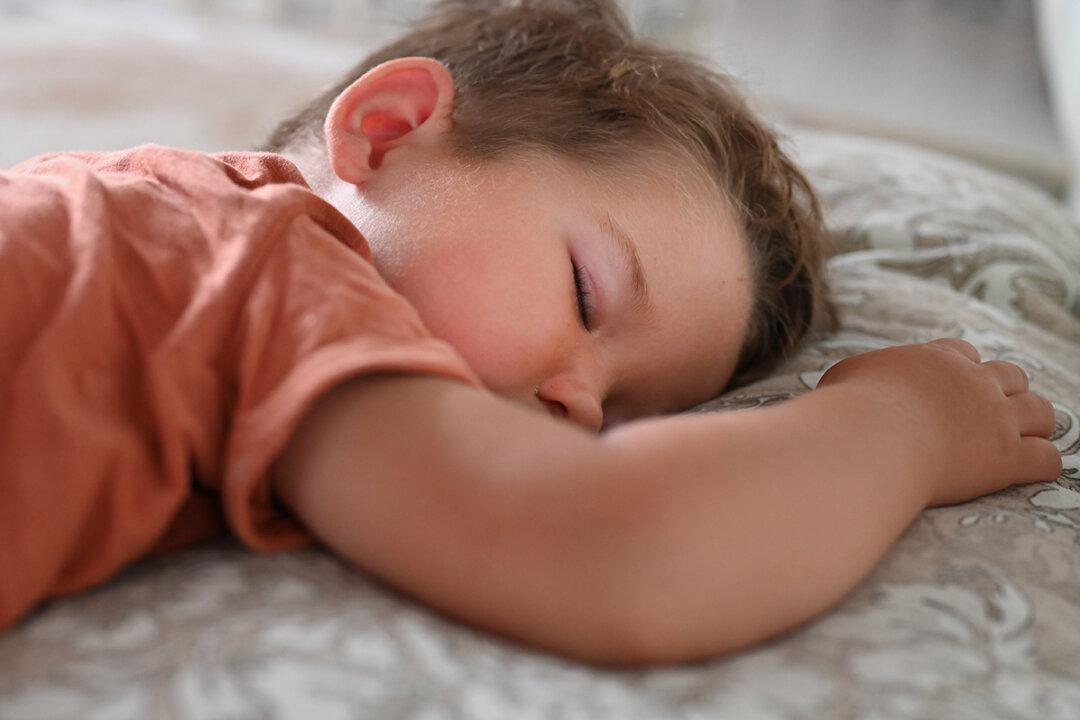
This is an identifiable subset and looking in, it looks like what is observed are spasms signalling an upcoming failure. The cause remains completely unknown here.
Doubtful if this leads to useful therapeutics.
Still a potent caution that seizures are not good and that full monitoring is certainly called for.
when all this becomes apparent.
Sudden Unexplained Childhood Deaths Potentially Linked to Seizures
A video analysis of children sleeping before their deaths reveals a few trends.
(Shutterstock)
By Amie Dahnke
1/9/2024
https://www.theepochtimes.com/health/sudden-unexplained-childhood-deaths-potentially-linked-to-seizures-5561431?
New research on sudden unexplained childhood death (SUDC) suggests the heartbreaking phenomenon that killed 2,900 children under the age of 4 in 2021 in the United States may be a result of seizures.
SUDC is different from sudden infant death syndrome (SIDS). SUDC is not a diagnosis but a cause of death used for someone between 12 months and 18 years old who has died from unknown circumstances. Elisabeth Haas, who has a master’s in public health, writes that SIDS is much more common, with a death rate of 38.7 per 100,000 live births; SUDC has a death rate of 1 to 1.4 per 100,000 live births. Common risk factors for SIDS, such as tobacco smoke exposure, bed-sharing, and having an infant sleep on its stomach, historically have not been risk factors for SUDC.
According to the U.S. Centers for Disease Control and Prevention (CDC), SUDC is the fifth leading cause of death for children between the ages of 1 and 4 years old.
It is often difficult to determine the cause of death of a child who succumbed to SUDC. The deaths are “rarely witnessed and postmortem examinations are unrevealing,” wrote the research team from the New York University (NYU) Grossman School of Medicine that looked into the cause of SUDC deaths. “Death mechanisms and causes of death remain unknown.”
History of Seizures, Sleeping Habits ImplicatedTo determine the cause of SUDC, the research team looked at 301 sleep-related child deaths available in the NYU Sudden Unexplained Death in Childhood Registry and Research Collaborative. The registry was established in 2014 with the NYU Langone Health Institutional Review Board’s approval and includes enrolled individuals’ parental consent.
The NYU team found that children under 5 years old were more likely than older children to have a history of febrile seizures, upper respiratory infections, or fever 48 hours before death. Additionally, children younger than 5 were more likely to have slept face down when they died.
The analysis included a review of seven videos of sudden pediatric deaths. In these videos, children between the ages of 13 months and 27 months died either during the night (6 in 7) or during a daytime nap (1 in 7). The audio-visual recordings of the deaths strongly implicated convulsive seizures, the NYU team wrote, despite many of the toddlers having illnesses up to three days before their time of death. Looking through the data, the team noted that 29.4 percent of the cases of children who died before age 5 had a history of febrile seizures and that 22 percent of toddlers who died due to infections or accidents also experienced febrile seizures.
According to the Mayo Clinic, a febrile seizure happens due to a high fever. Simple febrile seizures last from a few seconds to 15 minutes and typically do not repeat within 24 hours. Complex febrile seizures last longer than 15 minutes, occur more than once within 24 hours, and are sometimes confined to one side of a child’s body. Symptoms of a febrile seizure include a fever higher than 100.4 F, loss of consciousness, and shaking or jerking of the arms and legs.
Some research indicates that seizures can cause changes within a child’s hippocampus, which plays a vital role in spatial processing and navigation. A study published in Epilepsia in October 2023 noted that minor hippocampal abnormalities are common in patients who died by SUDC, regardless of febrile seizure history. Another 2016 article in Forensic Science, Medicine, and Pathology pointed out reports in which 50 percent of the SUDC cases involved children with hippocampal malformation.
How to Keep a Child Safe During a Febrile SeizureFebrile seizures occur in 2 percent to 5 percent of children. Unfortunately, nothing can be done to prevent them. Those caused by fevers may have a chance of being controlled by keeping a child’s fever down with fever-reducing medications like acetaminophen, but this may only keep the child comfortable and not prevent the seizure. Other times, seizures occur as a result of head trauma or health problems, such as low blood sugar.
Daily seizure medications are not recommended for children who have experienced febrile seizures. Only 30 percent of children who have had one febrile seizure will experience a second, and only 20 percent will experience three or more, according to Nationwide Children’s Hospital.
To ensure a child is safe during a febrile seizure, exercise the following precautions, as recommended by Nationwide Children’s Hospital:Never leave your child unattended in the bath.
Keep your child within arm’s reach in the pool.
Keep a lifejacket on your child while in lakes or rivers.
Do not allow your child to climb higher than 10 feet while on playsets or trees.
Always have your child wear a helmet when riding a bike.
No comments:
Post a Comment